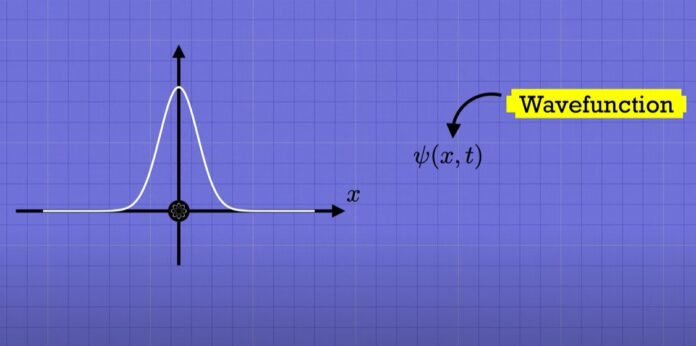Introduction
In quantum physics, a wave function is a variable number that mathematically characterizes the wave properties of a particle. The value of a particle’s wave function at a given place in space and time is connected to the particle’s likelihood of being present at the moment. It describes the particle’s quantum state as a function of momentum, spin, location, and time. It is represented by and the Greek letter psi.
What is Wave Function?
The wave function is a mathematical representation of a particle’s quantum state as a function of momentum, time, location, and spin.
- It is represented by the Greek letter psi.
- The value of a particle’s wave function at a particular moment is connected to the probability of the particle being there at the time.
- The wave function may be used to describe the chance of finding an electron within matter.
- This is possible if we add an imaginary integer that is squared to achieve one real answer that results in the electron’s location.
- The likelihood of discovering particles defined by a certain wave function at a given position is proportional to the square of the wave function’s value.
- With the invention of the Schrodinger equation in 1925, the idea of wave function was introduced.
What is Schrodinger Equation?
The Schrodinger equation is the linear partial differential equation that describes the wave function, . Erwin Schrodinger gave the equation’s name. Using quantum mechanics postulates, Schrodinger could operate on the wave function.
The Schrodinger equation is written as follows:
Time-dependent Schrodinger equation:
Time-independent Schrodinger equation:
Where,
m: mass of the particle
⛛: laplacian
i: imaginary unit
h = Planck constant
E: constant equal to the energy level of the system
Properties of Wave Function
- The particle’s whole quantitative information is provided.
- Should be both continuous and single-valued.
- When applying the Schrodinger equation, calculating energy becomes straightforward.
- The wave function is used to generate a three-dimensional probability distribution.
- If a particle exists, the chance of finding it is one.
Postulates of Quantum Mechanics
- The time evolution of the wave function is provided using the time-dependent Schrodinger equation.
- It is simple to understand a particle in a conservative field of force system using the wave function.
- The set of eigenfunctions of the operator is used to construct the linear set of independent functions.
- The hermitian operator is linked to a physically observable attribute called q.
- The expectation value of the property q may be obtained by conducting the expectation value integral with regard to the wave function associated with the system.
- There is an operator working on a wave function associated with a definite value of that observable such that it returns a wave function of that many times for every physical observable q.
Derivation of Wave Function Formula
A particle with a fixed energy has a wave function. E may be expressed as a linear combination of wave functions of the following form:
(1) This is a wave travelling in the positive x direction. A parallel wave moves in the opposite direction. As a result, the outcome is a standing wave that adheres to the boundary criteria.
This relates intuitively to the classical concept of a particle bouncing. This particle oscillates between the potential well walls. It is also feasible to use the wave function as the appropriate wave function for a free particle.
This free particle’s momentum is p = ℏk and its energy is E = ℏω. As a result, one may see:
(2) By using, one can write:
(3) Moreover, similarly
(4) This can also be written, using E = hω:
(5) Now generalizing that this is possible to the situation in which there is a potential energy as well as a kinetic energy present, then Eso that
Where is now the wave function of a particle moving in the presence of a potential V(x). However, considering the results Eq. (5) and Eq. (6) still apply in this case, then what we are left with is:
Normalization of Wave Function
When the wave function is normalised, the chance of discovering a particle in the system increases to 1. This shows that the exact shape of the wave function Ψ has been discovered.
Physical Significance of Wave Function
- Because it is not a quantity that can be observed, the wave function has no physical significance. However, it is complex.
- It is expressed as ψ(x, y, z, t) = a + ib, and the complex conjugate of the wave function is expressed as ψ*(x, y, z, t) = a – ib.
- The product of these two gives the probability density of locating a particle in space at any given moment.
- In comparison, 2 is a physical interpretation of a wave function since it provides probability information for locating a particle at allocation in a certain time.
Recommended Articles:
Wave Theory Of Light – History, Theory, Principle & Types
Waves I Definition, Types, Characteristics and Properties
Weathering Types I Physical, Chemical & Biological
What are Eddy Currents? Definition, Used and Systems
What Are Energy Bands?
